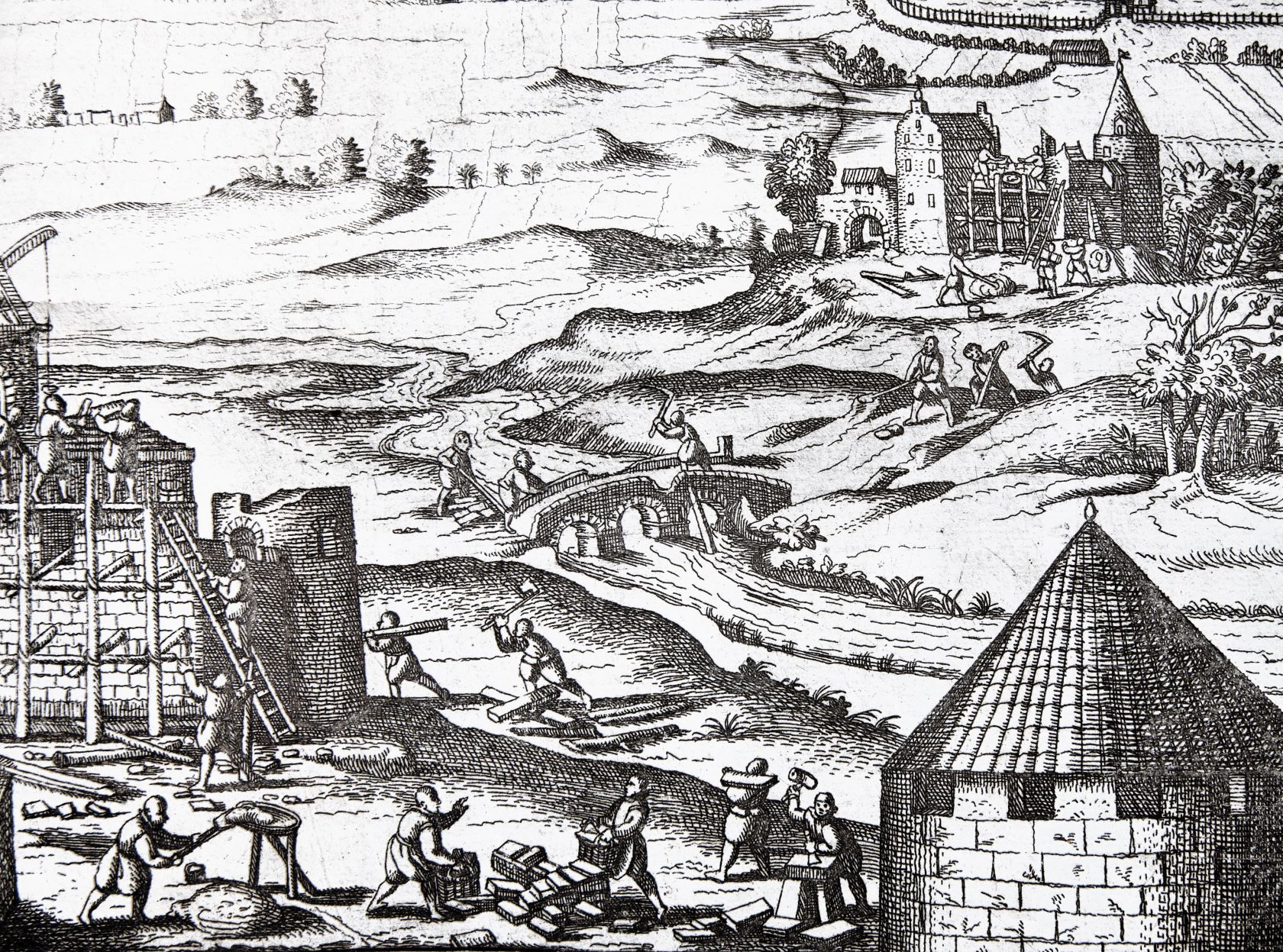
Picture from Resen, Peder Hansen, 1680: King Frederik the Second’s Chronicle.
CARPENTERS
Although the fortress largely consists of stone, earth and brick, it could not have been built without the efforts of the carpenters. They were the ones who provided the construction with the material for beams, frames, trusses and scaffolding.
Pine, spruce and oak timber were ordered from Norway and shipped here on small cargo boats. Beech trees were felled in the forests of Halland, processed and transported here. When master builder Jungmandt added up everything that was used in the fortress construction during the year 1610–11, he calculated that in addition to the14 oak logs, 24 oak beams and 24 pine beams that were used, 6,450 boards had also been used.
On the construction site, carpenters such as Jacob Dannerbergh, Hans von Sunde, Henrich Timmerman, Hans von Landbech, Oluff Giödersen and several others were commissioned to use the material. While those who worked with masonry or exacavation work had to find other work during the winter, the carpenters’ work could continue all year round. On the pay-list above, from January 1615, we find both the scribe and Lauritz the stonemason among the carpenters. Unfortunately we do not know more about what tasks they had to perform.
Svend the carpenter was hired from time to time to carry out the work on the fortress. On 4 April 1614, he was paid for having built two stairs, completed a loft and also for putting together a secret house door, i.e. a door to a toilet. Maybe it was the door to the old toilet that is in the museum today, on the second floor, in the pathway between the north and the western parts of the castle.
